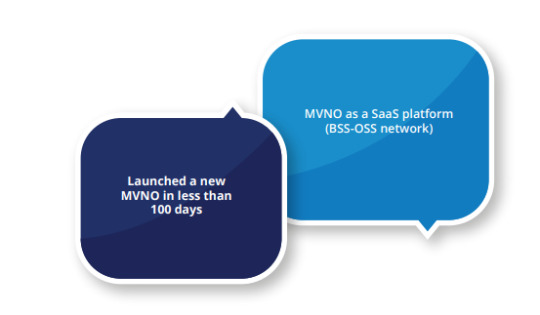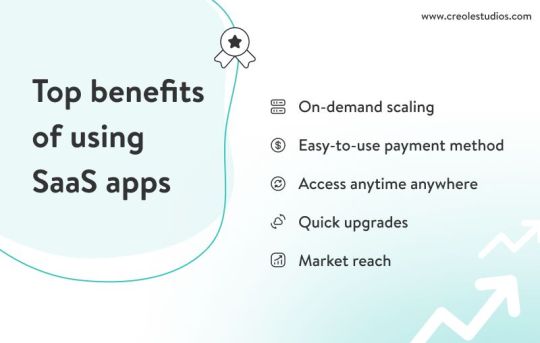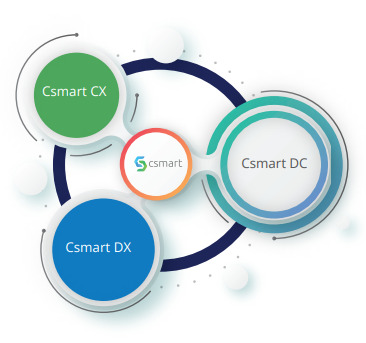#SaaSModels
Explore tagged Tumblr posts
Text
SaaS Models Exposed: Features, Benefits, And Opportunities
Software-as-a-Service (SaaS) has revolutionized the digital landscape with its scalable, cost-effective, and user-friendly solutions. Key features include cloud-based access, subscription pricing, and seamless updates, making it ideal for businesses of all sizes. SaaS offers benefits like reduced IT costs, flexibility, and enhanced collaboration. With growing demand, it presents vast opportunities for startups and enterprises to innovate and expand in the digital economy Read More..

0 notes
Text
Popular Pricing Strategies for SaaS Model & Services

Building a product is just the half of it as SaaS businesses have grown exponentially over the years. The deciding factor of a product’s success is often the Pricing factor. With numerous pricing models available, choosing a pricing plan compatible with your SaaS service requires efficiency. This article discusses the popular pricing strategies employed in finalizing these prices.
Things to consider Before deciding on the pricing, you must take into consideration your target customers, number of customers your platform serves, are there different levels of services, lifespan of your SaaS, whether you are handling individual customers or businesses. These factors make it easier to revisit and finalize over time. 1. Freemium A popular approach particularly favored amongst users. A freemium service can provide restricted free access and the restricted parts can include time or features. Freemium fits right for SaaS products with an extensive market. If set to products with extensive features that businesses can get away without having to pay for them then this might not be the best option for such niche products.
2. Usage-based pricing In other words, “Pay as you go” is a model that charges customers based on the time spent using the resources. These methods are usually charged by the number of actions a user performs and can be used in storage measures too. These methods might include transaction charges in addition. This model may benefit the users as they only pay for what they use, however, it is difficult for enterprises to rely on the revenue as it includes various fluctuations.
3. Tier based pricing Tier-based pricing targets multiple communities and offers different versions of the same product at different price points. Tiers can also be classified based on the user pool. Multiple tiers allow the possibility of increasing potential revenue and allow expansion. However, tier model marketing has to be precise to eliminate all possible exceptions otherwise might not provide the required outcome.
4. Flat rate pricing One of the simplest ways to allocate prices is the flat rate model. Flat rate pricing uses a one-size-fits-all-all approach without regard for the number of users or the usage time. The pricing is the same when charged monthly or annually. In this pricing system, the user has access to all the features a SaaS product or service has to offer. Most flat-rate models favor a freemium trial. Flat rate pricing is a more straightforward approach as it is easier to target and market.
5. Competitive pricing Competitive pricing is a pricing model used to test new ideas and services or products similar to your rivals. Competitive Pricing a product is usually set on products to acquire a customer base to understand your customer base. This strategy is best if you are testing new waters. Once you find out your product and how it fits in the market, you can change the pricing to improve the revenue. A competitor pricing is a low-risk and easy-to-implement model as it requires research and insight into your model. However, SaaS products might not benefit from Competitive pricing alone it can be used in conjunction with other pricing methods.
6. User-based pricing User-based pricing charges for the number of individuals using the service or the product. Each account is charged for the number of users who use the service. The User-based model is a popular choice among SaaS products and services for its ability to adapt and easily expand. Allows easy revenue prediction. The user pricing model is also a straightforward approach as there is no medium to upsell.
7. Feature-based pricing Often confused with tier pricing feature-based pricing is a different approach that charges users by features used or for certain features. Feature-based pricing models can help with expansion and contribute to revenue growth. It is better than opting for the tier model as customers may revoke unannounced.
8. Credit-based pricing Credit-based pricing is one of the popular pricing strategies. It does not require continuous use and can be purchased one time or redeemed as an incentive. The difference between this and usage-based pricing is that the user is charged beforehand.
Once you decide on the pricing model for your product reanalyze the strategies of questioning your target customers and product popularity. If a plan doesn’t seem to work out, try out different plans for a short while before zeroing in on a strategy model. Your product should resonate with your targeted user base by a great deal and should operate on a plan that supports expansion if you choose to add more to your SaaS product or plan.
0 notes
Text
Csmart’s 100-Day Plan for New MVNO Launch in Europe
About Client: Our client, a key player in the Austrian telecommunications market, offers advanced IoT & 5G solutions to corporations and MVNE services to telecoms of all sizes.
Objective: They aim to create a fully managed multi-tenant MVNE platform and provide it as a SaaS model to offer scalable MVNE services, enabling MVNOs to launch mobile brands with minimal upfront costs.

Minimal CAPEX Onboarding: Our swift onboarding process for MVNOs requires minimal CAPEX, reducing the financial barriers to entry for new MVNOs. This allows more MVNOs to enter the market and increases competition, benefiting consumers.
Secure Data Exchange: The empowerment of Csmart DX with an API gateway integration ensures secure data exchange. This feature provides robust authentication and authorization, safeguarding sensitive data and preventing unauthorized access.
Kore Wireless Success Story (csmart.digital)
0 notes
Text
Top 5 SaaS Development Trends to Watch for in 2023
Quick Summary: Whether you are an SME or an organization that needs to provide high-quality software solutions to your clients, you are struggling with writing code. To keep up with changing technology and meet the needs of customers, software developers need more time and resources to write code. We have the solution for you! Explore the SaaS development trends for all sorts of your business needs.
SaaS development has gained popularity among businesses due to its versatility and accessibility. One of the reasons businesses choose SaaS development models over others is their cost-effectiveness. However, the pandemic has changed SaaS development trends, so what might be in demand for 2022 may not be implemented in 2023 or later.
There are four types of SaaS applications, such as vertical SaaS, horizontal SaaS, batch SaaS, and hybrid SaaS. If you want to fully comprehend the potential of SaaS, you have to understand its main vectors.
Vertical SaaS (Suitable for one industry or organization)
Horizontal SaaS (Suitable for all types of businesses in any industry)
Batch SaaS (For specific business processes)
Hybrid SaaS (Perfect for businesses wanting to explore the benefits of the cloud)
The following blog will bring you five interesting SaaS trends you should care about and adopt in 2023 to get the most out of them. Before we dig up SaaS app development trends, let’s see how SaaS works.
How does SaaS Work?
SaaS is a software delivery model that allows you to access data from any device with the help of an internet connection and web browser. We can say that SaaS is a ready-made solution that anyone can use without setting up any software. Today, SaaS applications have been a common and easy-to-use option in different sectors like financial, enterprise resource planning, and analytics.
What is the purpose of SaaS?
To reduce development costs
To reduce development time
To get accessibility and compatibility at a low cost
For better operational management
To build an application that runs on a device connected to the internet
Why is SaaS so popular?
As of 2022, there are about 337 unicorns in the SaaS market. Here are some reasons why your business should consider a SaaS solution.
SaaS allows companies to meet their demands with updated solutions.
The recurring nature of the SaaS business model makes the services affordable.
It permits flexibility as far as additional services are concerned.
Companies can get predictable revenue estimates based on sales activities.

5 Interesting SaaS Development Trends to Watch for in 2023:
Given the history and present scenario, it is safe to say that SaaS companies have nowhere to go but up. SaaS development trends are responsible for maintaining this growth. Let’s take a closer look at how SaaS is changing and what the future holds for this popular service model.
1. White-labeling SaaS:
A white label SaaS is an unbranded product that a company purchases. Furthermore, it undergoes rebranding, and the company sells the product as its own.
One of the most prominent examples of white-labeling SaaS is email marketing software. It is something that has added an ease factor in facilitating a seamless communication process in the corporate culture.
White-label SaaS is more favorable for small company owners as it reduces management time and expenditures. Additionally, businesses can cater to a larger audience with an additional set of features. This makes it one of the most intriguing SaaS development trends, especially for small-scale businesses.
2. Mobile-first responsive design:
6.95 billion denotes the number of smartphones as of 2020. This figure jumped to 7.26 billion in 2022 and is projected to reach 7.49 billion in 2025.
Since such a high population has access to smartphones, SaaS companies must indulge in a smartphone-responsive design. This is necessary for businesses to cater to the audiences that might access their websites through mobile devices.
In other words, we might notice a surge in the launching of the movie versions of the SaaS core products in the future.
3. Micro-SaaS for small businesses:
Micro-SaaS is one of the SaaS development trends built to regulate small businesses or individuals conducting their business on a low scale. It is a tool that significantly improves the functions of the existing SaaS products by including add-ons, accessories, extensions, etc.
The reason why Micro-SaaS is considered to be one of the best and latest trends in SaaS application development is its limited demand for workforce. It can function well under the guidance of a single person, thereby negating the requirements for a team.
Generally, people often confuse Micro-SaaS with Vertical SaaS. But the difference is that Micro-SaaS can function well under a single person, while Vertical SaaS requires a full-fledged team for the development process.
Some of the best examples of SaaS include SolidGigs (gig finder for freelancers), Plausible (alternative to Google Analytics), Bannerbear (auto-generated social media images), etc.
4. Customer experience is everything:
Whenever businesses are stuck in a dilemma and can’t seem to choose between profitability and customer experience, the latter should be prioritized.
Numbers denote that 66% of customers expect businesses to understand their requirements and needs. This is why more and more SaaS companies are trying to reduce the complexity and focusing more on enhanced customer experience.
Hence, we might notice customer experience as one of the leading SaaS app development trends in the foreseeable future.
5. Better security measures:
Research indicated that 63% of the people have experienced SaaS misconfiguration leading to a security concern that prompted SaaS companies to work on security, digital privacy, and encryption.
In the near future, SaaS products will undergo practices, such as enhanced authentication, Cloud Access Security Broker (CASB) solution, SaaS Security Posture Management (SSPM), data encryption, etc.
Takeaway:
There is a fierce push to incorporate technology into business. SaaS has emerged as a focus area, thus it’s not unexpected to see how many top SaaS developments are advancing in the industry.
You might feel overwhelmed by the impressively expanding trends, such as white-labelling SaaS, micro-SaaS offerings, etc. In this blog, we have included the most significant ones. They will raise the industry to new heights. As a renowned SaaS development company, we can help you to develop SaaS applications in any industry or business size.
Contact us today with your requirements for SaaS application development services. >>>>>>>>>>>>>>>>>>>> — — — — — — <<<<<<<<<<<<<<<<<<<<
[ Original Source: Top 5 SaaS Development Trends for 2023 ]
#saas#saasdevelopment#saasdevelopmenttrends#saastrends2023#saascompany#saasindustry#saassolutions#creolestudios#softwareasaservice#saasapplicationdevelopment#saasdevelopmentservices#saasappdevelopment#saasdevelopers#saasdevelopmentcompany#benefitofsaas#futureofsaas#topsaascompanies#b2bsaasproduct#saasmodel#saasplatform
0 notes
Photo

A new upgrade for nft tecnology.. or not? @intradodigital #feedposting #feedpost #feedinstagram #postinstagram #feednews #nftnews #wisekey #intrado #fossasystems #wisesatellite #blockchainnft #blockchain #fossasat #saasmodel #entitymanagement #optimizeproductivity #predictivemaintenance #nasdaq #sixswissexchange #rootoftrust #carlosmoreira https://www.instagram.com/p/COdwbYcAlWi/?igshid=1m6sqonn7xa8u
#feedposting#feedpost#feedinstagram#postinstagram#feednews#nftnews#wisekey#intrado#fossasystems#wisesatellite#blockchainnft#blockchain#fossasat#saasmodel#entitymanagement#optimizeproductivity#predictivemaintenance#nasdaq#sixswissexchange#rootoftrust#carlosmoreira
0 notes
Text
Csmart’s Quick Launch Solution: New MVNO in Europe in 100 Days
About Client: Our client, a key player in the German telecommunications market, offers advanced IoT & 5G solutions to corporations and MVNE services to telecoms of all sizes.
Objective: They aim to create a fully managed multi-tenant MVNE platform and provide it as a SaaS model to offer scalable MVNE services, enabling MVNOs to launch mobile brands with minimal upfront costs.
Centralized Identity Management: Centralized identity management has been enabled to enhance the user experience. This feature allows users to manage their identities and access controls from a single, centralized platform.
Comprehensive Contract Management: We have developed a comprehensive contract management module capable of handling highly complex and customized contracts. This ensures that all contractual obligations are met and that MVNOs can focus on their core business operations.

Kore Wireless Success Story (csmart.digital)
0 notes